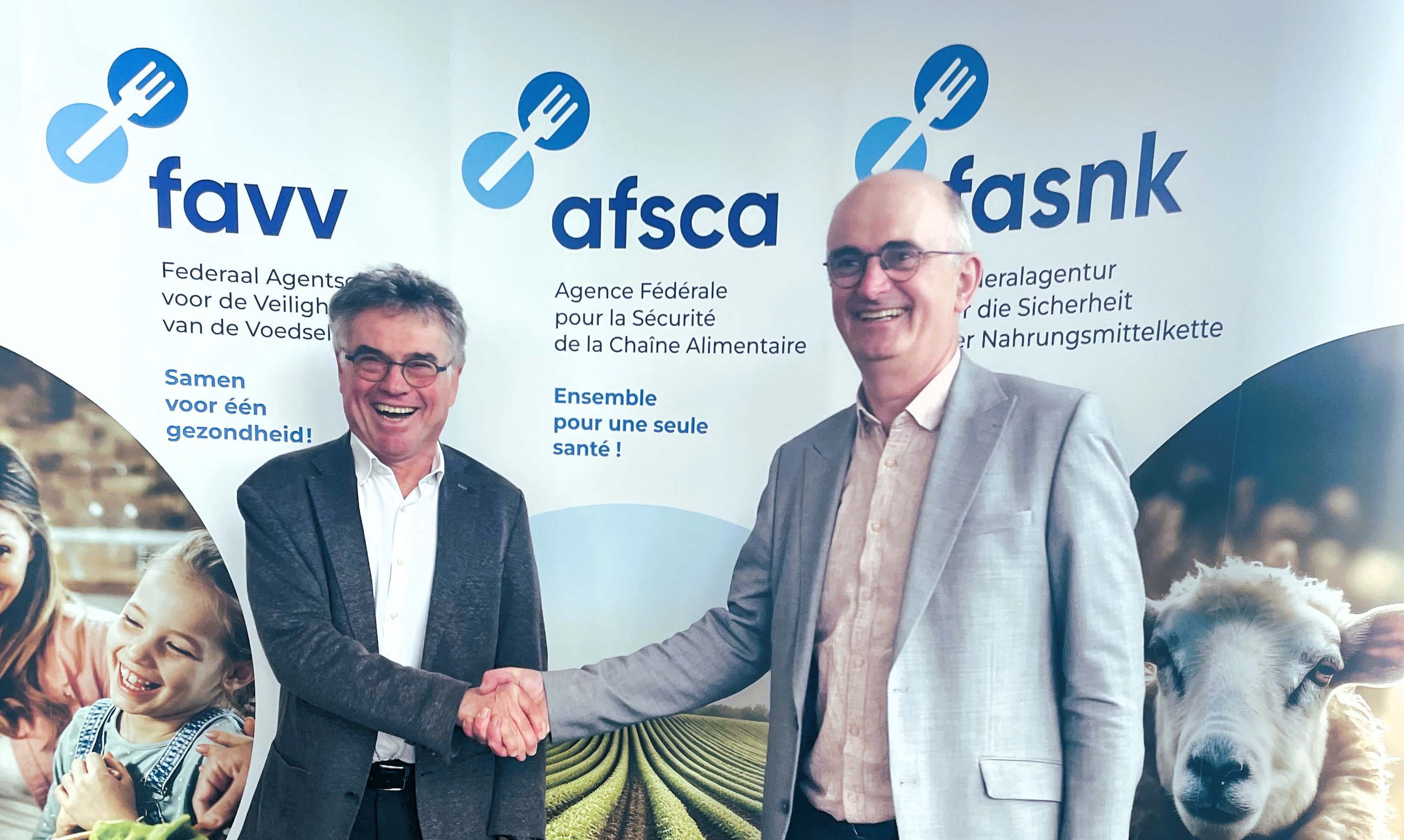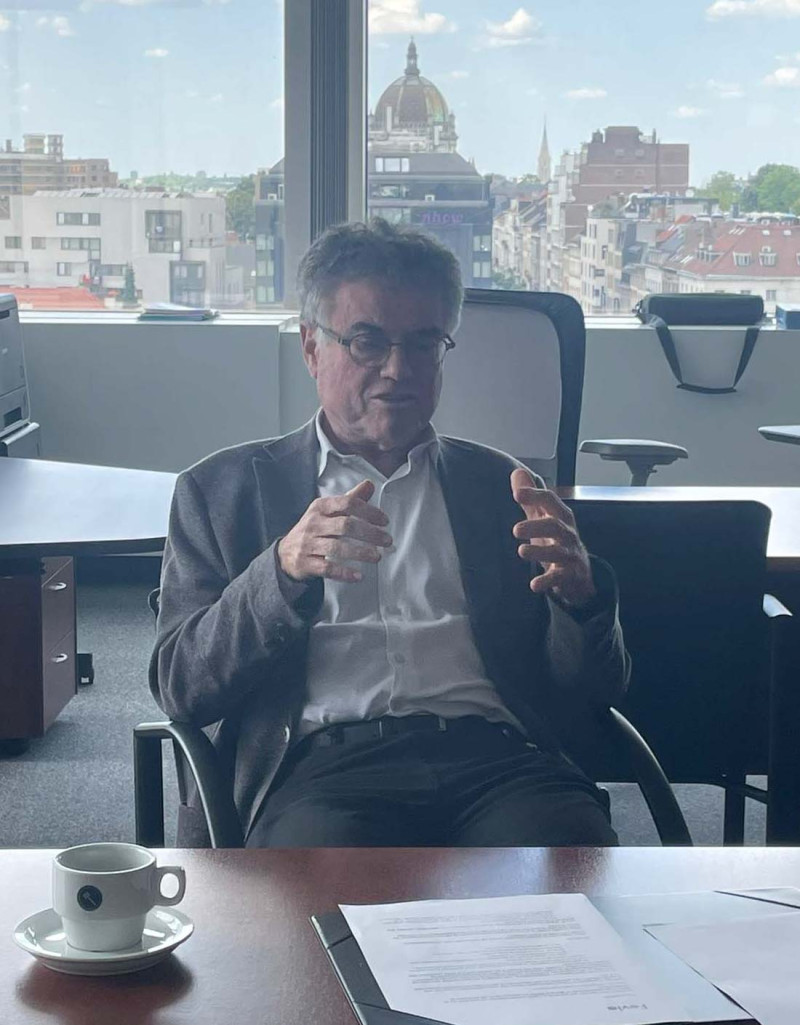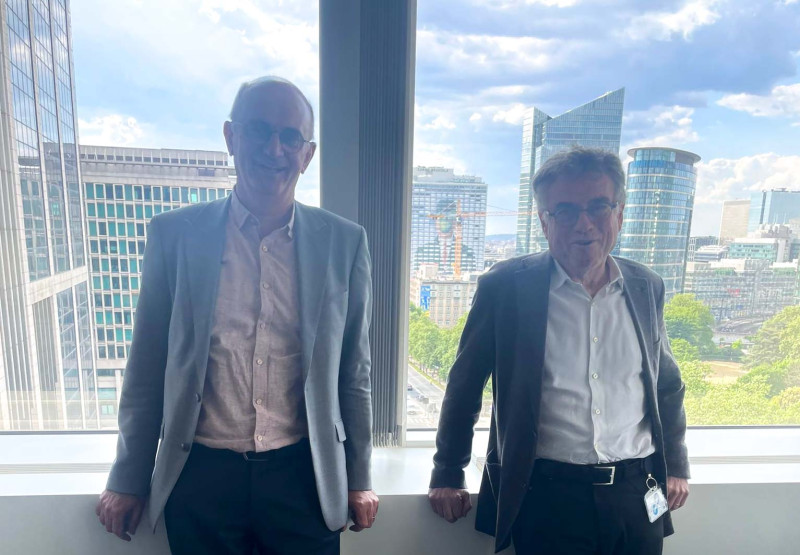Did you know that Belgian food ranks among the safest anywhere in the world? When it comes to food safety, Belgium’s unique self-monitoring system means our country has already been a step ahead for many years. Something to be proud of! We spoke to Herman Diricks, the outgoing Chief Executive Officer of the FAVV, the Food Chain Safety Agency and Johan Hallaert, Senior Food Policy Advisor with Fevia, the federation of the Belgian food industry. Here is a look-back at 25 years of collaboration and the ways in which new technologies, such as AI, are able to bolster tomorrow’s food safety.

Welcome Herman and Johan. You have known each other for as long as the FAVV has been around. Herman, what would you say are the FAVV’s biggest achievements since it was set up?
Herman: ‘In the wake of the dioxin affair, four organisations – which were distrustful of each other – were brought together and merged to become the FAVV. A definitive structure was in place within two years, followed in due course by a transparent funding system. Since then, we have made major forward steps. Nowadays, the FAVV is a mature organisation with a monitoring system that is unique in Europe.’

How does this translate on the ground?
Herman: ‘Our inspectors use objective tools such as checklists and a points-based system. This enables us to conduct consistent, standardised and transparent checks. This approach builds trust, including at international level. Food companies are able to optimise their processes in consideration of unambiguous requirements and the markets they are working.
Its ports make Belgium a major gateway to Europe and beyond. Close collaboration between the FAVV and foreign authorities is crucially important. This allows us to ensure a safe and efficient food trade, protecting consumers as well as supporting the exports of Belgian food companies.
An excellent case in point being the trade agreement with China. Some Chinese products are now getting access to the European market based on set parameters. In exchange, we get to export pig parts that are consumed to a lesser extent in Europe – such as ears and trotters – but which are considered a real delicacy in China.’
Belgian food ranks among the safest in the world. Herman, do you have figures to back up that claim?
Herman: ‘As part of our inspections in 2024, we took 67,592 samples, 98% of which were compliant with the rules. That's a good figure, as you're never going to find 100% compliance.’
Johan, why is it that Belgium is a step ahead in the area of food safety?
Johan: ‘This is something we owe to the validated self-monitoring system. Self-monitoring is one of the foundations of the European food safety policy. All companies up and down the food chain are required to roll out and maintain this kind of system.
In order to do even better in terms of food safety, we go one further in Belgium, as a direct consequence of the dioxin affair: companies can have their self-monitoring system externally validated on a voluntary basis. In doing so, the FAVV or an authorised certification body comes in to check whether all food safety laws and regulations are being properly implemented. Each sector has its own sectoral guide to this end.’
What are the benefits of having a validated self-monitoring system?
Johan: ‘Companies that have a validated SMS are seen to perform remarkably better when they are inspected by the FAVV. For instance, 83% of them do not get any comments whatsoever. This is 16% better than for companies that don’t run a validated system.
Not only do they receive fewer warnings and official notices, the risk of being imposed a severe penalty drops by almost half: from 7.3% to 3.2%. Which clearly shows that having your SMS validated pays off, both in terms of compliance and risk reduction. What's more, they are subject to fewer inspections and they get a substantial discount on the FAVV fees. Two more good reasons to have their self-monitoring system validated!’
The FAVV is a pioneer in European food safety surveillance: are you ready to take on the challenges ahead with the aid of technology?
Herman: ‘Both the government and food companies are investing heavily in food safety. We are on the eve of a technological revolution. This includes applications such as artificial intelligence, which will enable us to assess risks faster and more accurately than ever before.
Whereas in the past we analysed samples or badges after the event, we will soon be able to collect data in real time. Sensors, cameras and smart analyses will enable us to inspect carcasses in an automated manner, for instance. This sees us evolve towards a monitoring system that is as efficient and at the very least every bit as reliable as that of a veterinarian.’
What is needed to actually implement this technology?
Herman: ‘Progress requires investment capacity as well as adapted legislation. The technology is there, but Europe also needs to evolve its regulations along with the technology. Without this, we’re not allowed to use these tools, even if they are safer or more efficient.
In certain parts of the world such as the Scandinavian countries, some inspections are already being carried out remotely using cameras. The next step is for these images to be analysed using AI. This is not science fiction, it's within reach. Above all else, we need to avoid falling behind in Europe.’

Are some of these technologies hitting their limits?
Johan: ‘Yes, there are certainly still many questions. Take Whole Genome Sequencing (WGS) for instance: a real game changer that allows food-related outbreaks to be detected more quickly. This analysis technique makes it possible for all possible aspects and elements to be linked: from contamination to the company. The question is: how far should we go with this?’
Herman: ‘WGS enables us to detect and eliminate environmental pathogens even before the product hits the market. This prevents contamination, even if it is a one-off, sporadic salmonella contamination. Using the technology wisely will enable us to monitor more effectively and intervene more swiftly where it is really needed. Today this is not profitable or feasible yet for every company, but it will be. One thing is clear: investing in technology now not only reduces risks, it also ramps up efficiency.
What would you say is the biggest misconception among consumers regarding food safety?
Johan: ‘A lot of people confuse ‘danger’ with ‘risk’. If traces of a chemical substance are found – as in a recent study on meat substitutes – this quickly leads to concerns among the members of the public. But it is important to realise that a hazard only becomes a risk if there is a sufficiently high level of exposure. In most cases, this is absolutely not the case. So there is rarely a real problem for food safety, even if the media sometimes tend to make things sound alarming.
Herman: ‘Consumers can rest safe in the knowledge that everything that comes onto the market is safe. If something does go wrong, immediate action is taken by way of product recalls. What is often overlooked is the degree of responsibility consumers themselves have once the product is in their homes. Food safety does not stop at the checkout.’

